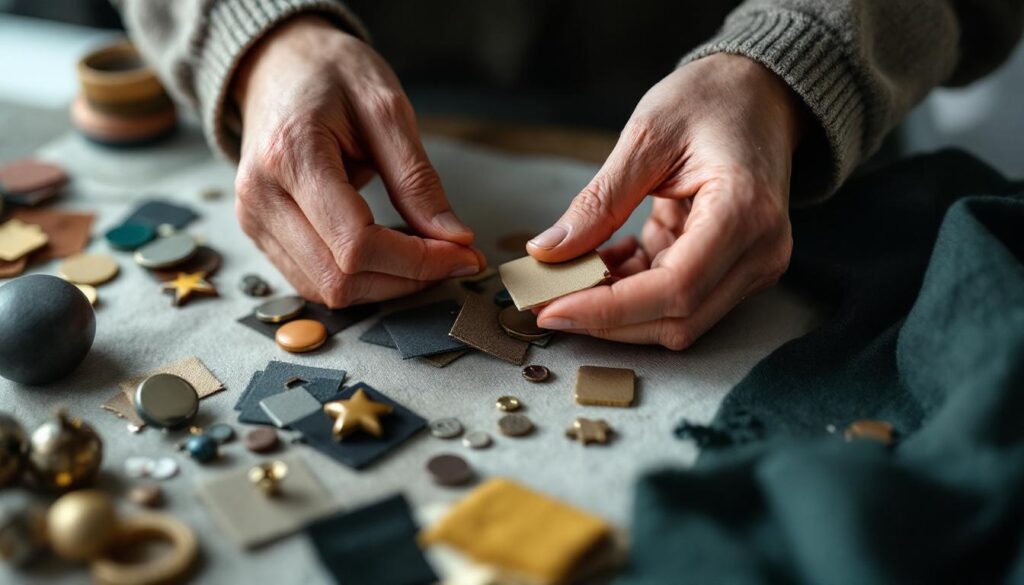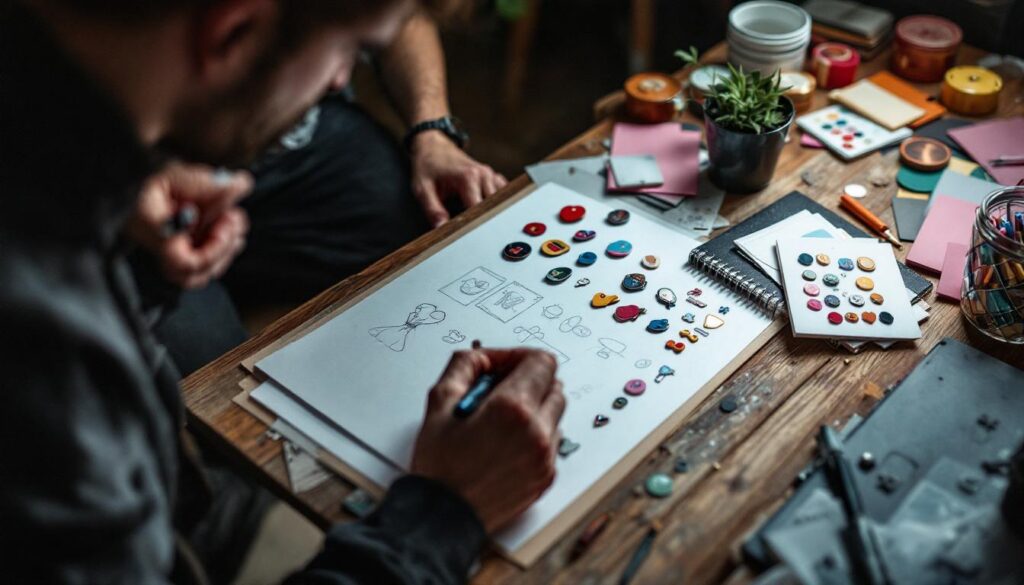Custom lapel pins have become a popular accessory, serving as a means of personal expression, branding, and commemorating special events. Designing a lapel pin that stands out and leaves a lasting impression requires a thoughtful approach, combining creativity with strategic planning. This guide will delve into the essential steps and considerations for designing custom lapel pins that not only catch the eye but also resonate with the intended audience.
Understanding the Purpose of Your Lapel Pins
Before embarking on the design process, it is crucial to define the purpose of your lapel pins. Are they intended for promotional use, to commemorate an event, or to serve as a fashion accessory? Understanding the primary function will guide your design choices and ensure that the final product aligns with your objectives.
Promotional Lapel Pins
Promotional lapel pins and custom coins are often used by businesses to enhance brand visibility. They can be distributed at trade shows, conferences, or community events. When designing promotional pins, consider incorporating your company logo, brand colours, and a tagline that encapsulates your brand message. The goal is to create a pin that not only represents your brand but also encourages recipients to wear it, thereby increasing exposure.
Commemorative Pins
Commemorative lapel pins are designed to celebrate significant milestones, achievements, or events. Whether it’s a charity fundraiser, a sports event, or a corporate anniversary, these pins serve as tangible reminders of special occasions. The design should reflect the essence of the event, using symbols, dates, or imagery that resonate with participants. Consider using unique shapes or finishes to make the pin more memorable.
Fashion Accessories
In recent years, lapel pins have also emerged as fashionable accessories, appealing to individuals looking to express their personality or style. When designing fashion-oriented pins, focus on current trends, materials, and artistic designs. The pin should complement various outfits and appeal to a broader audience, allowing for personal expression.
Choosing the Right Materials
The choice of materials for your lapel pins significantly impacts their overall look and feel. Common materials include metal, enamel, and plastic, each offering distinct advantages and aesthetic qualities. Understanding these materials will help you make informed decisions during the design process.
Metal Pins
Metal lapel pins are durable and exude a sense of quality. Options such as brass, copper, or zinc alloy can be used, with finishes ranging from polished to antique. Metal pins can be designed with various techniques, including die-striking or soft enamel, allowing for intricate designs and vibrant colours. The weight and sturdiness of metal pins also contribute to a premium feel, making them ideal for promotional and commemorative purposes.
Enamel Pins
Enamel pins, particularly soft enamel, are popular for their vibrant colours and detailed designs. These pins are created by filling recessed areas of a metal base with coloured enamel, resulting in a smooth finish. Hard enamel pins, on the other hand, are polished to a smooth surface, offering a more refined appearance. Enamel pins are versatile and can be used for various purposes, from promotional items to fashion accessories.
Plastic Pins
Plastic lapel pins are a cost-effective alternative, particularly suitable for large orders or events where budget constraints are a concern. While they may not offer the same durability or premium feel as metal or enamel pins, they can still be designed in vibrant colours and unique shapes. Plastic pins are lightweight and can be easily customised, making them a practical choice for giveaways or promotional events.
Designing Your Lapel Pin
Once you have a clear understanding of your objectives and materials, the next step is to create the design. This phase involves combining creativity with strategic thinking to ensure that your lapel pin effectively communicates its intended message.
Sketching Your Ideas
Begin by sketching out your ideas on paper or using design software. This initial phase allows for experimentation with different shapes, colours, and layouts. Consider the size of the pin, as it should be large enough to showcase your design but small enough to be worn comfortably. Aim for simplicity in your design; intricate details may get lost in smaller pins, so focus on bold elements that can be easily recognised from a distance.
Colour Selection
Colour plays a vital role in the design of lapel pins, influencing both aesthetics and emotional response. Choose colours that align with your brand identity or the theme of the event. For promotional pins, using brand colours can enhance recognition and recall. Additionally, consider the psychological impact of colours; for instance, blue often conveys trust, while red can evoke excitement. A well-thought-out colour palette can significantly enhance the appeal of your lapel pin.
Typography and Imagery
If your design includes text, ensure that the typography is legible and complements the overall design. Avoid overly intricate fonts that may be difficult to read at smaller sizes. When incorporating imagery, select symbols or icons that are relevant to your message. The imagery should be easily identifiable and resonate with your target audience, enhancing the pin’s overall impact.
Prototyping and Feedback
Before finalising your design, creating a prototype is essential. A prototype allows you to assess the physical attributes of the pin, including size, colour accuracy, and overall appearance. This step is crucial for identifying any potential issues and making necessary adjustments.
Gathering Feedback
Once you have a prototype, gather feedback from a diverse group of individuals, including potential users and stakeholders. Their insights can provide valuable perspectives on the design’s effectiveness and appeal. Consider conducting surveys or focus groups to gain a comprehensive understanding of how the pin is perceived. Be open to constructive criticism and use it to refine your design further.
Final Adjustments
Based on the feedback received, make any necessary adjustments to your design. This may involve altering colours, resizing elements, or simplifying intricate details. The goal is to create a pin that resonates with your audience while effectively communicating your intended message. Once you are satisfied with the final design, you can proceed to production.Check out more about Custom Made Medals: Personalised Recognition That Makes an Impact.
Production and Quality Control
Choosing the right manufacturer for your lapel pins is a crucial step in the production process. Research potential manufacturers and evaluate their capabilities, production methods, and quality standards. A reputable manufacturer will ensure that your pins are produced to the highest quality, reflecting the design accurately.
Production Methods
Different production methods can affect the final outcome of your lapel pins. Die-striking is a popular method for creating metal pins, resulting in a durable and high-quality product. For enamel pins, both soft and hard enamel techniques are widely used, each offering unique finishes. Discuss your design specifications with the manufacturer to determine the most suitable production method for your pins.
Quality Control Measures
Implementing quality control measures during production is essential to ensure that the final product meets your standards. Request samples before the full production run to assess the quality and accuracy of the pins. Additionally, consider establishing quality benchmarks with your manufacturer to ensure consistency across all pins produced. This attention to detail will contribute to the overall success of your custom lapel pins.

Marketing and Distribution
Once your custom lapel pins are produced, the next step is to effectively market and distribute them. A well-planned marketing strategy can enhance visibility and encourage engagement with your target audience.
Creating a Marketing Plan
Develop a comprehensive marketing plan that outlines your goals, target audience, and promotional strategies. Consider leveraging social media platforms, email marketing, and events to showcase your lapel pins. Engaging visuals and compelling narratives can help capture the attention of potential customers and encourage them to wear or purchase your pins.
Distribution Channels
Identify the most effective distribution channels for your lapel pins. This may include online sales through your website or e-commerce platforms, as well as physical sales at events or retail locations. Consider offering bulk discounts for businesses or organisations looking to purchase pins for promotional purposes, as this can increase sales and brand exposure.
Conclusion
Designing custom lapel pins that make a lasting impression involves a thoughtful approach that encompasses understanding the purpose, selecting the right materials, creating an eye-catching design, and implementing effective marketing strategies. By following these steps, you can create lapel pins that not only serve as memorable accessories but also effectively communicate your message and enhance your brand identity. With careful planning and execution, your custom lapel pins can leave a lasting impact on your audience, fostering connections and promoting engagement.

